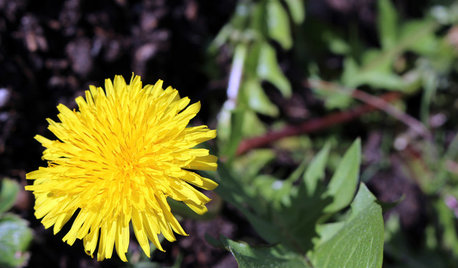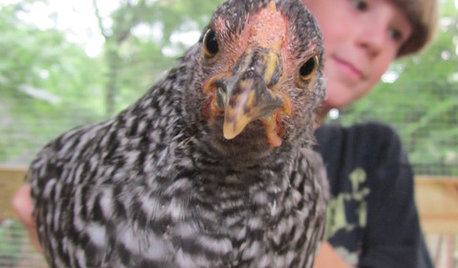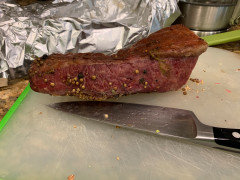Annual corned beef discussion!
Olychick
last year
Featured Answer
Sort by:Oldest
Comments (13)
Related Discussions
Canning Pate and Corned Beef
Comments (25)Thanks all the replies. You have made an interesting and informative conversation! Dave, yes. I have spent a lot of time in NZ. At one time, canning, using proper jars (which are marginally heavier than ours and very durable) was very popular. New Zealand was and still is to some degree a very rural country. Like here, canning has been supplanted by freezing. Essentially that mostly explains the lack of supplies now. And I have met a few folk who used to use pressure canners. I think they called them retorts or autoclaves. Carol is right; with BWB canning for such things like jams or chutneys, the grocery food jars work fine. Lack of pressure canning aside, the problem is the shelf life of these products AND the entire loss of canned fruits. Everyone (of a certain age) in NZ remembers their Ma or Grandma or Grandpa canning peaches or plums or other orchard crops. I dont know how they used do Lambs Tongues, for instance, but there must be those who miss those too! Essentially, NZ is an example of somewhere that used to do something that has now been mostly lost. Thanks the freezing tip, Woodsmoke. Some miscreants (like me) actually prefer some things canned. In my case, the canned pate was just a whim; something to do with the livers. I could envision having some small jars of some delicacy, but going through the whole process of making pate frequently from frozen liver isnt so appealing! Additionally, Im not so keen about freezing in general. We can have long power outages as well. Appreciate the tips JimnGinger. I will brine some brisket and freeze it, but again, like the pate, I was envisioning a handy lunch to make from a small jar. I have canned beef chunks, which I like very much, and it occurs to me that I could make these taste like Corned Beef if I wanted. Commercially canned Kippered Herring is very common and popular in Northern California grocery stores. I havent tried to home can any, but home canned smoked fish is very doable. Sardines, Herring, Smelt and Mackerel, Salmon and Tuna... Generally, I have found that home canned fish or meat is far better than what one able to purchase. Canning fish as opposed to freezing it, is, to me, a much much better approach. Thanks again!...See MoreVeg Beef Soup - (Digdirt)
Comments (7)Hi Tracy - we call it "Freezer Burn" soup since it is made out of all the interesting freezer cleanings. ;) We use the NCHFP guidelines for making and canning soups with meat. In this particular case it was a piece of london broil and some older hamburger for the beef to make stock. Cooked it on low in seasoned water in the crockpot overnight. Then it was shredded/chopped. To the meat and stock we added some frozen leftovers of lima beans, tomatoes, onions, corn, some squash, diced carrots, some peas, frozen sweet peppers, and a couple of diced potatoes. It is along the lines of the discussion here on making stock from odds and ends. We add a bit of salt, pepper, and dry italian seasonings to taste and add citric acid to each jar for additional safety. Process per the NCHFP guidelines. Dave PS: the venison chunks in beef broth can be added to stews, chili, and soups. Venison stroganoff!! And we grind up some too and add mix with hamburger for meat loaf. We tried venison spaghetti sauce one year but didn't care for it. But wife makes diced venison hash (like corned beef hash) for breakfast often with it. Dice the chunks, dice up a couple of canned potatoes, toss in some diced frozen onions and diced peppers, S&P and cook covered on low heat in a cast iron skillet for about 20 mins. Serve with a couple of poached eggs and toast. ;)...See MorePlimoth Plantation Annual Plant Sale -Memorial Day Weekend
Comments (0)I've never been to this sale, but I just got an email from Plimoth Plantation. Check the calendar for other events - they have a Corn weekend event also. Claire May 29 to 31 Plimoth Plantation's Annual Plant Sale 8:30 AM to 3:30 PM Gardens tell a story, whether they produce, beautiful flowers, tasty vegetables, or healing herbs. In addition to hard-to-find herbs and plants, this annual tradition, plant sale held at the Plimoth Plantation Horticulture Center offers heirloom flowers and vegetables too, all at reasonable prices. Proceeds help to support the MuseumÂs horticulture program. -------------------------------------------------------------------------------- Plimoth Plantation's a-MAIZE-ing Corn weekend The story of corn and the role it played in the relationship between the Wampanoag and the Pilgrims is an interesting one. Discover why corn was so precious in the 1600s and spend this weekend learning everything you ever wanted to know about this very important crop at Plimoth PlantationÂs a-Maize-ing Corn Weekend. Join Museum staff as they discuss 17th century methods of planting and offer fun corn-related crafts, including cornhusk doll making in the Wampanoag Homesite from 1-3 PM, and planting demonstrations in the 17th Century English Village. Try your hand at corn grinding too. And at the Patuxet Café, enjoy tasty corn-inspired dishes, including a pudding of Indian Corn. See a small collection of cornhusk dolls on loan from the Boston ChildrenÂs Museum in the Henry Hornblower II Visitor Center....See MoreBuying a side of beef
Comments (55)I've been doing this for years and years, now. I also buy whole hogs and free-range chickens. I just LOVE sailing past the meat counter at the grocery stores, especially since so much of what's there is nasty, injected, hormone-laced junk. IF you buy locally (try Local Harvest or Eat Wild, on the web, for farmers in your region) you can find excellent deals. I buy natural--no antibiotics or hormones--beef, grass-raised and corn-finished, by the side. I got one in September and I only paid around $450 ?? (maybe closer to $500; can't remember) dollars for a side of beef: that's hundreds of pounds of healthy steaks,prime rib, pot roasts, stew meant, ground meat, etc. My pig went to market this week. I'm getting about 125--140 pounds of pork chops, roasts, tenderloin, sausage, summer sausage, ground pork, ribs, hocks, hams and bacon for a total cost of about $260. AND it's the same quality pork (non-confinement, natural, hormone/antiobiotic-free, milk-feed) as sold by fancy-schmancy places like Niman Ranch, for a fraction of the cost. I have two freezers in my basement and also rent a locker from the butcher who processes the meat for overflow. That only costs me an additional $5 a month. Additionally, I have the satisfaction of dealing directly with the good folks who work hard to feed our families, and they actually make *more* selling directly to consumers in many cases, than they would dealing with big Agri-Business. It's the ONLY way to go, now, in my opinion. Plus, I just adore that "Little House on the Prairie"/all stocked up for the winter feeling of security....See MoreOlychick
last yearOlychick
last yearOlychick
last year
Related Stories

FEEL-GOOD HOMESimple Pleasures: Get Cozy on a Cold Day
Some things are best when the weather is bad. Heat up some cocoa and join the discussion
Full Story
FALL GARDENING20 Favorite Flowers for the Fall Landscape
Vivid blooms and striking shapes make these annuals and perennials a delight in autumn gardens
Full Story
SMALL SPACES8 Challenges of Cottage Living
‘Small rooms or dwellings discipline the mind,’ Leonardo da Vinci once said. Just how much discipline can you handle?
Full Story
GARDENING GUIDESWhy Your Garden Might Be Full of Weeds
Tired of battling unwanted plants? These surprising reasons for weediness point the way to cures
Full Story
GARDENING AND LANDSCAPINGOld School Green Design: Add Texture With Grass
Ornamental grasses capture the breeze and ripple like water in the landscape
Full Story
GARDENING GUIDESBackyard Birds: How to Care for American Goldfinches
The American goldfinch is a bright-in-the-summer visitor and one of the only vegetarian songbirds. Here's how to give them a healthy habitat
Full Story
FARM YOUR YARD4 Farm-Fresh Chicken Coops in Urban Backyards
These Atlanta henhouses are worth crowing about for their charming, practical designs
Full Story
HOUSEKEEPINGDishwasher vs. Hand-Washing Debate Finally Solved — Sort Of
Readers in 8 countries weigh in on whether an appliance saves time, water and sanity or if washing by hand is the only saving grace
Full Story
KITCHEN DESIGNStay Cool About Picking the Right Refrigerator
If all the options for refrigeration leave you hot under the collar, this guide to choosing a fridge and freezer will help you chill out
Full Story
KITCHEN DESIGNWonderful Wood Countertops for Kitchen and Bath
Yes, you can enjoy beautifully warm wood counters near water sans worry (almost), with the right type of wood and sealer
Full Story






beesneeds